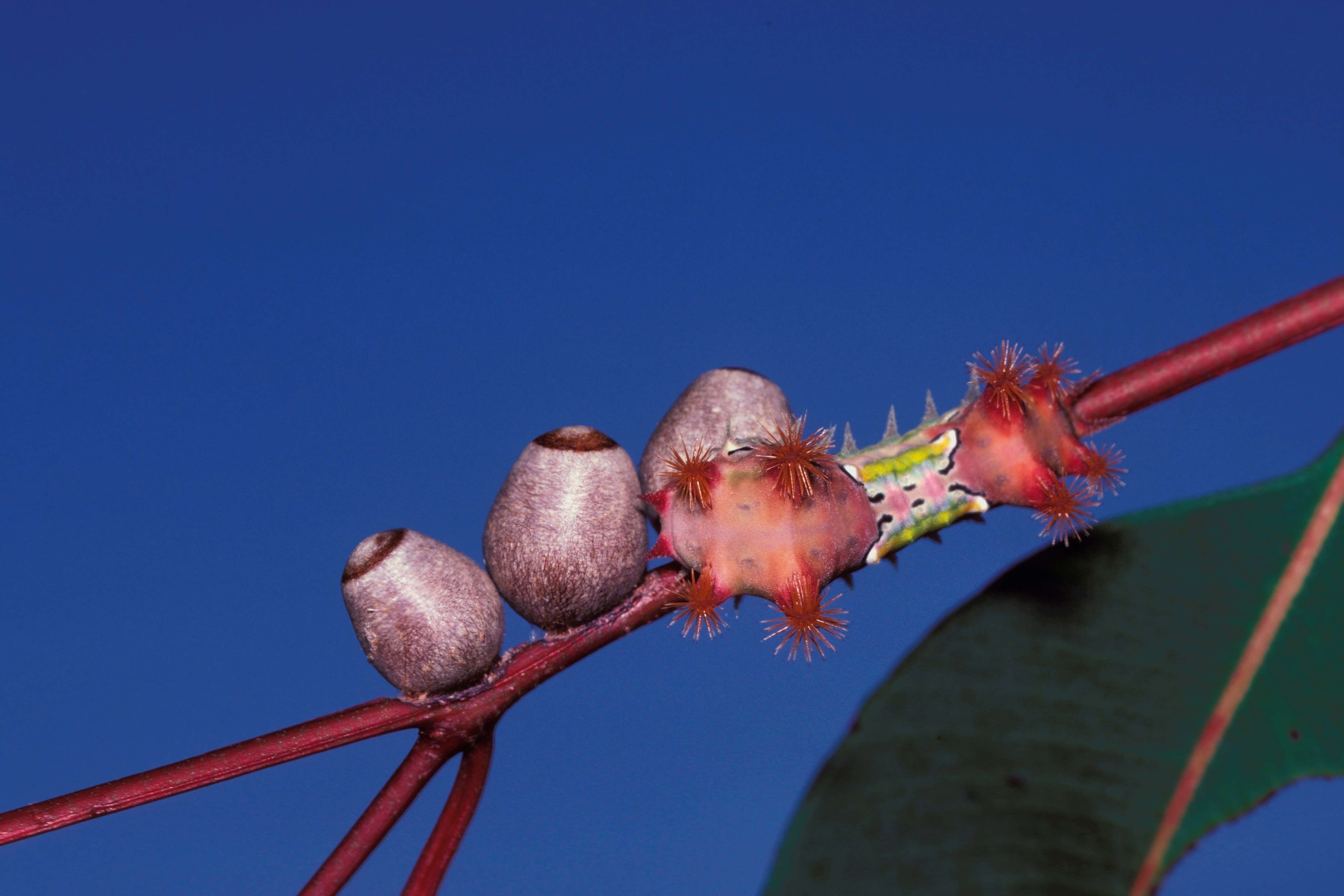Create a free profile to get unlimited access to exclusive videos, sweepstakes, and more!
Poisonous caterpillar's name means 'bearer of the gifts of wounds,' but its venom could save lives

Sorry, Venom. The caterpillar of the mottled cup moth, Doratifera vulnerans, could probably earn itself a place in the Marvel universe as the most poisonous villain ever.
It should be expected of something whose scientific name means “bearer of the gifts of wounds.” Its venom is right up there with that of many spiders, scorpions, bees, wasps, and ants, and it is one of the few poisonous caterpillars that exists. Flashing its colors and spines is a way of telling predators to bug off.
Ironically, as biologist Andrew Walker of the University of Queensland in Australia realized, this caterpillar’s highly toxic venom had been hiding bioactive peptides that could work medical wonders in the future. He led a study recently published in PNAS.
“Adaptations like producing pain-causing venoms are more unusual since most lepidopterans are non-venomous,” he tells SYFY WIRE. “Their venomous nature flows on to affect some of their other features, such as the warning colors advertising their poison. Some of these venoms are extremely promising for treatment of pathologies such as stroke and epilepsy, as well as developing new eco-friendly insecticides.”
Defensive venoms are much more complex than previously thought. It might be because most venoms can be used for both hunting and defense. With 151 protein-based toxins that belong to 59 different groups, the D. vulnerans caterpillar isn’t messing around. Its poison is so unique that none with the same chemical structure has ever been seen in any other creature. Butterflies and moths, or Lepidoptera, have evolved defensive venom on their own several times throughout their evolution. It does help to be able to sting a curious bird or lizard when you can’t yet fly (though they are harmless after metamorphosis).
Walker and his research team found that there had been some convergent evolution, at least on the molecular level, in limacodid moths like D. vulnerans, hymenopterans including wasps and ants, and arachnids such as spiders and scorpions. Convergent evolution occurs when unrelated species, which sometimes develop far away from each other, evolve similar features. This is probably the result of being exposed to similar features in their environments. Predators that can easily snap up insects were probably one of reasons many evolved to sting.
“Interestingly, some D. vulnerans toxins looked like those of spiders, some like those of bees, and some appeared completely new compared to known peptides,” Walker says. “The three similar to spider venom may work in similar ways, by modulating electrical signals in nerve cells, which makes them useful for treating nervous system pathologies.”
Neurotoxins can be lethal on their own, but isolating certain compounds makes it possible to create therapeutic substances. Peptides are one of these compounds. They are made out of chemically bonded amino acids (this type of bond is known as a peptide bond), and vulnericins are the particular ones that make up venom. D. vulnerans has a vulnericin in common with spiders that comes from cecropin, which is an effective bacteria and parasite killer. Lepidopterans are believed to have inherited cecropins from more than one common ancestor that was creeping around in the distant past.
It is the peptides related to cecropin that cause pain, which is what Walker was able to demonstrate by fractionation, or taking apart the components of synthetic versions. He thinks that the caterpillar had copied the genes of peptides that gave their ancestors used for immunity and warped them into venom to protect itself. Not all of them are safe for use in humans or other mammals. However, the most powerful anti-nematode peptide the team found in the venom of D. vulnerans was nontoxic to mammalian cells. How this nematocide works is something that Walker would like to further investigate.
“Our work is at a very early stage, and we now need to investigate the function of the individual toxins in more detail,” he says. “Other peptides showed insecticidal or antimicrobial activities and may give us clues how to design better molecules of this type.”


























